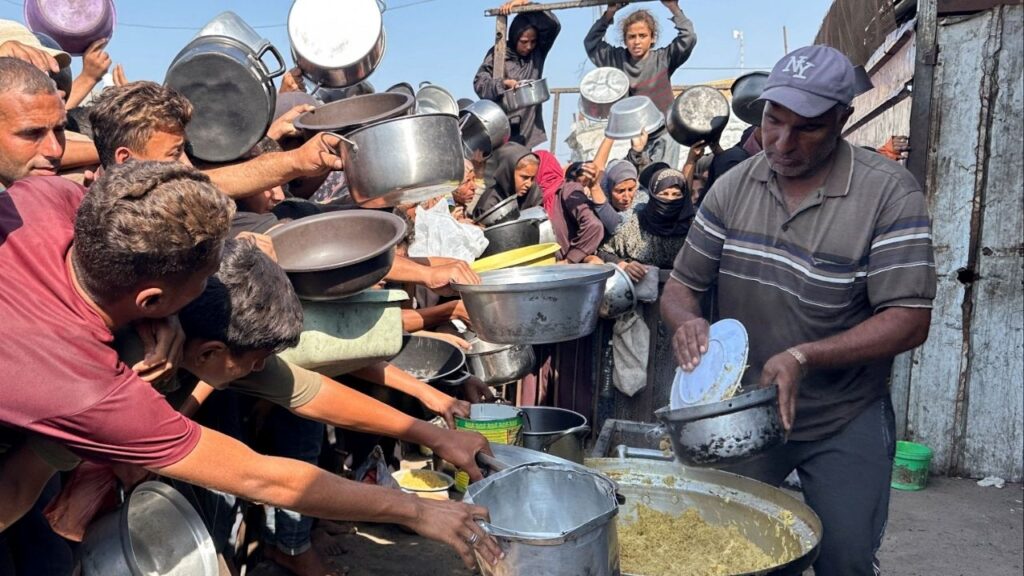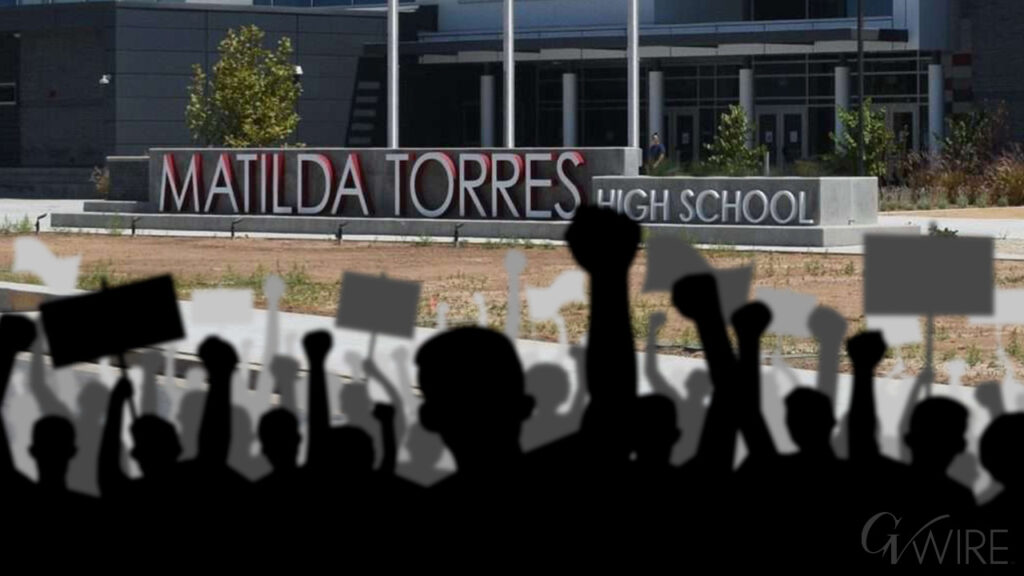Domestic violence calls surged in Fresno County, driving up the San Joaquin Valley's rate despite declines elsewhere. (Rawpixel.com)
Share
|
Getting your Trinity Audio player ready...
|
Across most of the San Joaquin Valley, calls to law enforcement to report domestic violence have remained steady — or even gone down — in recent years. But a dramatic spike in Fresno County has given the Valley the highest rate of such calls of any region in the state.

Tim Sheehan
Central Valley Journalism Collaborative
Between 2019 and 2023, domestic violence calls to law enforcement more than doubled in Fresno County from roughly 6,500 to more than 13,300, according to data provided to the state Department of Justice by local police and sheriff’s departments across California.
Fresno was the only San Joaquin Valley county to see a year-over-year surge in domestic violence calls from 2022 to 2023 – an increase of more than 2,000 calls countywide, or more than 18% above the 11,291 cases reported in 2022.
That sheer volume of calls eclipses all but two of California’s 58 counties, Los Angeles and San Diego, each of which is substantially more populous than Fresno County. Fresno’s calls also translated to a rate of more than 132 calls per 10,000 residents – second highest in the state behind only sparsely populated Del Norte County on California’s northwestern coast.
Including Fresno County’s increase in calls, the San Joaquin Valley had the highest rate of domestic violence calls of any region of the state in 2023, at more than 71 calls per 10,000 residents. (2023 is the most recent full year for which data is available.)
From San Joaquin County in the north to Kern County in the south, law enforcement agencies in the Valley reported a total of more than 30,700 calls related to domestic violence in 2023. That’s down by more than 2,000 from the previous year, and 800 higher than the Valleywide total for 2019.
-
Fresno County: 13,348 calls in 2023, up 18.2% from 11,291 calls in 2022.
-
Kern County: 4,749 calls in 2023, down 23% from 6,166 calls in 2022.
-
Kings County: 537 calls in 2023, down 8.5% from 587 calls in 2022.
-
Madera County: 736 calls in 2023, down 15.9% from 875 calls in 2022.
-
Merced County: 1,540 calls in 2023, down 46.9% from 2,902 calls in 2022.
-
San Joaquin County: 4,035 calls in 2023, down 11.4% from 4,555 calls in 2022.
-
Stanislaus County: 2,748 calls in 2023, down 9.4% from 3,033 calls in 2022.
-
Tulare County: 3,070 calls in 2023, down 14% from 3,568 calls in 2022.
Local experts say it’s difficult to determine why Fresno County’s reported cases rose so vigorously while other counties declined. Nicole Linder, CEO of the Fresno-based Marjaree Mason Center, said possible explanations may be an actual increase in incidents of domestic violence, or that more victims are willing to report abuse to police.
Reported cases of domestic violence emanated not only from the largest cities in each county in 2023. Almost 5,500 calls Valley-wide were reported by police in cities with fewer than 20,000 residents or by sheriff’s departments in unincorporated parts of their counties.
Yet, many of the available services for people experiencing domestic violence – from advocacy, counseling, and shelters to financial and legal assistance – are concentrated in the Valley’s larger cities.
Linder said that rural victims of domestic violence likely have a harder time getting the help they need, including emergency shelter if their lives are in danger.
“I think the bigger challenge is sometimes out in the distant communities, there’s just a lack of awareness about resources available to them, how to get help,” she said. “And then when you’re looking at alternatives for shelter, you’re much more limited in a community that may not even have a hotel.”
Linder noted that Marjaree Mason Center has offices in Reedley, southeast of Fresno, and programs in schools throughout Fresno County. The organization spends hundreds of thousands of dollars each year to house emergency victims of domestic violence in motels when its own shelters are full, according to the group’s annual report.
Lauren Skidmore, CEO of the Open Door Network in Bakersfield, said her organization – a key domestic violence resource in Kern County – also noted the difficulties for rural victims.
While most of Open Door Network’s services are based in Bakersfield, the nonprofit provides shelter and other services from a site in Delano on the northern edge of Kern County, which also serves nearby communities, including McFarland and Wasco. But in some other communities scattered across the county, “they do have to come to Bakersfield,” Skidmore said.
“We know survivors and victims reach out to where they have trusted relationships,” she said, but without an ongoing presence of resources in a community “they’re not going to seek support.”
Reported and Unreported Cases
What many people think of as “domestic violence” between spouses or significant others is sometimes more specifically known as “intimate partner violence.” The term refers to acts committed by a current or former spouse, girlfriend, boyfriend or significant other in an effort to exert power or control. It is a subset of domestic violence, which includes any violent or abusive acts committed by either an intimate partner or other family member, and may include elder abuse or child abuse. The state Department of Justice data does not distinguish intimate partner violence from domestic violence.
And it’s not only physical abuse. “Domestic violence can be physical, sexual, emotional, economic, psychological or technological actions or threats of actions, or other patterns of coercive behavior that influence another person” in a relationship, the DOJ states. “This includes any behaviors that intimidate, manipulate, humiliate, isolate, frighten, terrorize, coerce, threaten, blame, hurt, injure, or wound someone.”
While domestic or intimate partner violence is most typically associated female victims, a Centers for Disease Control survey on intimate partner violence reveals that men can also experience such abuse. The survey showed that about 41% of women and 26% of men have been victims of such actions during their lifetimes.
The survey also indicated that “racial and ethnic minority groups are disproportionately affected by intimate partner violence.” That bears special significance in the San Joaquin Valley, where Census data shows racial minorities – Black, Asian, Native American, multi-racial – represent nearly 65% of the population, including about 55% of residents who are Hispanic or Latino.
Nationwide research, such as the 2023 National Crime Victimization Survey, indicates that roughly half of all cases of domestic or intimate partner violence go unreported by victims, suggesting that the number of cases in the Valley is actually far higher than what is known.
In Kern County, a steep two-year decline in domestic violence calls may look good on the surface, but Skidmore said it does not necessarily mean fewer assaults and other forms of abuse are happening. Rather, she said, it’s more likely that many cases are not being reported in the first place.
Linder, of the Marjaree Mason Center, said the problem could be worse in rural communities.
“I think the more geographically distant you come from a city center, it’s unreported,” she said.
Several factors likely contribute to why victims don’t report domestic violence, most notably fear – fear of more physical violence, fear rooted in financial dependence on an abuser, fear of splitting up a family, or fear of retaliation, Skidmore said.
“And shame is a big one,” she added. “As a victim, you kind of get to a point where you think, ‘How did I get myself in this situation? It must be my fault. I chose this life, and this is what I deserve.”
She also pointed to emotional attachments that bring a couple together in the first place.
“It’s the thought that this will end, this can’t be forever,” she said. “He or she is telling you they’re going to stop and this will be over, and you believe them because you love them.”
Enough Resources For Victims?
Across the Valley, there are an estimated 402 beds dedicated to victims of domestic violence and their children, according to data from the U.S. Department of Housing and Urban Development. Those beds range from emergency shelters to longer-term accommodations. The number of available beds in relation to reports of domestic violence to law enforcement suggests a critical shortage of places to house victims who may still be in danger.
-
Fresno County: 156 beds, relative to 13,348 domestic violence calls to law enforcement in 2023.
-
Kern County: 72 beds, relative to 4,749 calls in 2023.
-
Kings County: 21 beds, relative to 537 calls in 2023.
-
Madera County: 9 beds, relative to 736 calls in 2023.
-
Merced County: 22 beds, relative to 1,540 calls in 2023.
-
San Joaquin County: 45 beds, relative to 4,035 calls in 2023.
-
Stanislaus County: 21 beds, relative to 2,748 calls in 2023.
-
Tulare County: 56 beds, relative to 3,070 calls in 2023.
The number of beds in the region is generally considered to be insufficient for the volume of victims.
“We are continuously full,” Skidmore said of her organization’s shelter and housing facilities in Bakersfield and Kern County. “We do have regular turnaways. We see that when there is a supply, there is a demand.”
In addition to housing, organizations throughout the Valley provide a range of other services, including counseling, safety planning, legal services and advocacy as cases make their way through the court system. Advocates, however, say there are not enough resources to meet the needs of even the reported cases in the region.
“What is key is there is not enough funding for long term therapy or other support,” Skidmore said. “Those are key resources for these people to be able to overcome these challenges.”
About the Author
Tim Sheehan is the Health Reporting Fellow at the nonprofit Central Valley Journalism Collaborative. The fellowship is supported by a grant from the Fresno State Institute for Media and Public Trust. CVJC student research assistant Lauren Aiello contributed to this report. Contact Sheehan at tim@cvlocaljournalism.org.


















